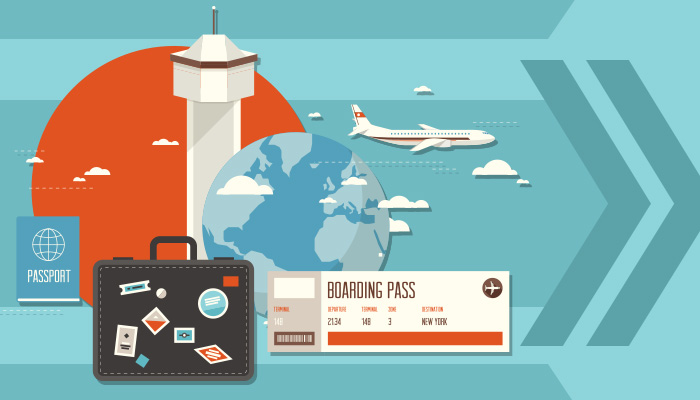Kenshoo Releases an Insightful Industry Spotlight Report for the Travel and Leisure Industry
Kenshoo, a leading software company that provides predictive media optimization technology, has just released an infographic that explores the air travel industry and its relationship to online marketing. While much of the statistical data comes from Kenshoo Internal Data, other statistical data were derived from Google, comScore, the Search Agency via eMarketer, eConsultancy, and SHIFT Interactive via eMarketer.
What are the infographic’s key takeaways? According to Kenshoo, the air travel industry receives higher click-through rates (CTRs) relative to other industries, as well as deep tablet and mobile penetration. Searchers within the air travel sector also demonstrate high engagement, driving lower average cost-per-click (CPC) and higher average click-through rate (CTR) than the majority of other travel sub-categories.
Both business and leisure travelers are embracing social media, and 51% of global travelers gain inspiration for at least one element of their trip through social channels. A Google Think Insight study conducted in 2013 revealed that 58% of leisure travelers and 64% of business travelers always begin their travel booking and planning process via search [See Figure 1]. 1 out of 4 travelers have booked air travel tickets on tablets, though the majority of travelers use computers to complete their bookings.
When examining business travelers, the 2013 Google Think Insight study also stated that business travelers prioritize brand sites, price, and convenience. 65% of business travelers book directly on company sites more often than they do via online travel agencies—an 11% increase from 2012. When it comes to air travel, business travelers prioritize price, convenient departure and arrival times, as well as fewer stops and better connections.
When it comes to leisure travel bookings, the Google Think Insight study stated that 93% of leisure travel bookings are done on computers, 24% on tablets, and 19% on mobile devices.
Figure 1
Across all industries, the travel and leisure industry drives the highest click-through rate at 2.86%, and is 79% higher than the total calculated CTR across all verticals [See Figure 2].
Figure 2
Meanwhile, according to a comScore study on 2012 travel spending by sub-category, air travel captured the majority (65%) of total travel e-commerce spending for 2012 [See Figure 3]. Hotel reservations came in second place (19%), while car rentals ranked at third place (9%). Travel e-commerce sales in the United States reached $103 billion in 2012, an increase of 9% from 2011.
“Travel is a leading online commerce category, and despite being a pioneer in the sector 15 years ago, it is still growing at nearly double-digit growth rates and remains very competitive,” stated John Mangano, VP of comScore Marketing Solutions for Retail and Travel. “With the online channel driving such a high percentage of dollars within the broader travel industry, understanding the competitive landscape is essential to determining the most effective sales and marketing strategies.”
Social media also plays a huge role in the travel and leisure industry. According to a December 2011 study conducted by SHIFT Interactive via eMarketer, travelers from the Asia-Pacific region are one of the most heavily engaged in social media. Over 70% of consumers from the Asia-Pacific region say they use social media to gain inspiration for at least one element of their trip, compared to 51% globally.
As for social media engagement, the top 10 major airlines varied significantly when it came to their number of Twitter followers [See Figure 4]. JetBlue Airways took the top spot for the number of Twitter followers (1,665, 424) and TAM Airlines published the most tweets (30,365 tweets).
Figure 4
Marketing Digest Writing Team
Latest posts by Marketing Digest Writing Team (see all)
- How Taco Bell Struck Gold with Its Memorable Viral Marketing Campaigns - September 15, 2015
- Salesforce Marketing Cloud Releases New Instagram Marketing Tools - September 12, 2015
- Chrome Begins Pausing Flash Ads by Default to Improve User Experience - September 3, 2015





